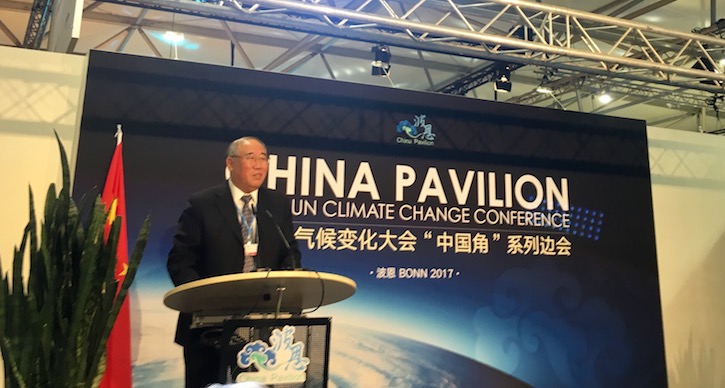
By Kate Li
Since China announced that 2017 would be its launch year for the national carbon market, there has been mounting expectation for this ambitious plan of establishing potentially the world’s largest carbon market. Will China stick with its timetable to launch the national carbon market by 2017? Where will the new exchange be located? All indications are that the launch of the carbon exchange will be spread out over a longer time period than initially expected.
Mr. Xie Zhenhua, Special Representative for China Climate Change, Chairman of the Chinese delegation to COP 23 indicated during his speech in Bonn that the National Development and Reform Commission’s proposal for the national carbon market is currently undergoing approval with China’s State Council. If so, it is highly unlikely that the launch will take place in November as had been commonly believed. In fact, it will be a challenge for the national exchange to be established in any meaningful way before the end of the year.
Regarding the location of the new national exchange, it has been widely believed that the XiongAn region – the new administration capital – would become the headquarters. More recent information indicates that there will be two headquarters: one in Hubei, and another in Shanghai.
Shanghai, as the financial capital, will host the national exchange and act as the clearinghouse for the national emissions trading scheme. The new “China Carbon Allowance Alliance Exchange” will be comprised by the existing seven regional carbon exchanges, plus Sichuan and Fujian, who are establishing their own regional exchanges.
Hubei would be responsible for the CO2 permit registration process, as it has accumulated significant experience in market trading and regulatory compliance as a regional pilot site.
It is likely that a “soft” or “test-run” launch will happen by the end of 2017—instead of establishing a completely functional and operational national carbon market as anticipated. We understand that the government plans for a “preparation period” from 2018 through the middle of 2019 to ensure operations in the new Shanghai and Hubei exchanges are operating properly.
In addition, simulated trading will be launched on a trial basis in 2019 and early 2020. It is expected that the actual full-fledged launch of the national carbon market will now not occur until late 2020.
The Paulson Institute believes that it is in all of our interest that China successfully launches this market – and that it gets it right rather than “gets it fast.” As part of this effort, the Institute is engaging with the Chinese government to support building best in practice regulatory and governance structures and encourage China to adopt global standards in reducing carbon emissions. It will be a long and slow process, but as the saying goes, nothing good comes easy.


